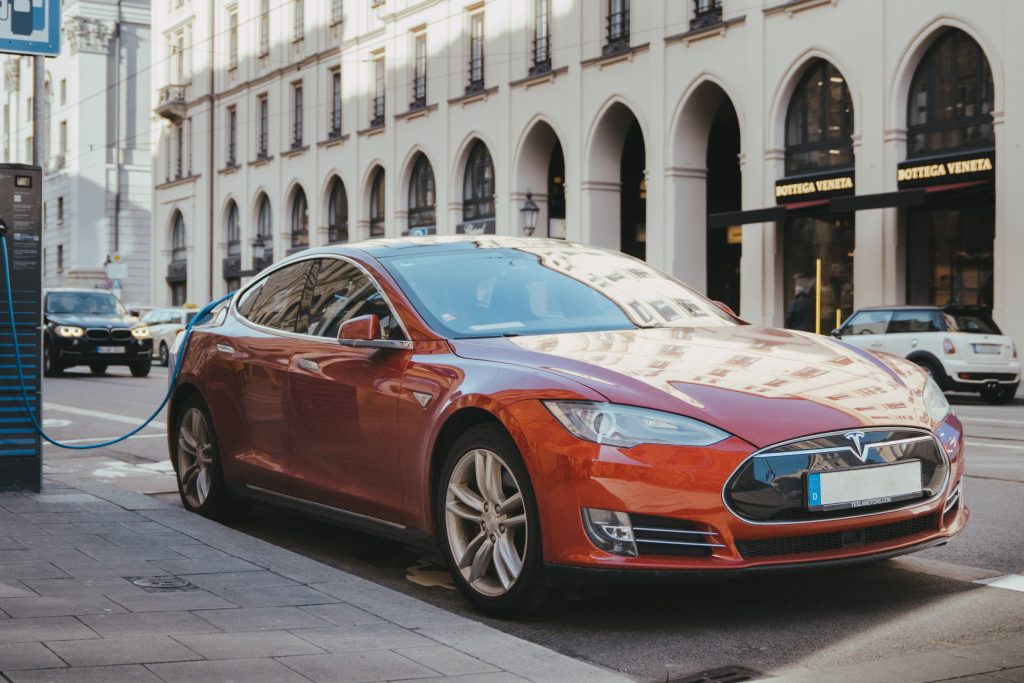By: Otaiba Ahsan

Automobiles continue to advance, with tons of new features being introduced over the years. Safety is always top of mind for all car manufacturers. Whether it’s for high-speed driving on the freeway, or something as simple as parking your car, Tesla has a ton of features with a safety-first design. Park Assist is one of their more useful tools and can add tremendous value to your ownership experience. Continue reading for details on how Park Assist works for your Tesla.
How Park Assist Works
Park Assist is designed to detect the presence of objects, people, and other cars. When driving slowly, such as when parking, the vehicle will alert you on-screen if an object is detected near your Tesla.
It’ll also tell you the approximate distance you are from whatever was detected. For example, if you’re parking and are 60 cm from a pole behind you, it’ll show this measurement so you have an idea of how close you really are. Park Assist is made possible thanks to the car’s cameras and sensors.
NOTE: You might not be alerted if your Tesla rolls freely in the opposite direction. For instance, if your car rolls backwards down a hill while the vehicle is in Drive, Park Assist won’t be engaged.
WARNING: Tesla states that you should never depend on Park Assist to inform you if an area you’re approaching is free of objects or people. This can lead to serious harm to yourself, others, and your vehicle. Park Assist should be used responsibly, and you should always do physical checks yourself as well.
Visual and Audio Feedback
When you shift to Reverse, the Park Assist view displays on the touchscreen, showing objects that are close to the front and rear of your Tesla. This view will close when you shift into Drive unless you’re still near a detected object in front of the car. The Park Assist view can manually be closed by touching the X on the screen.
When driving at low speeds with the camera app displayed on the touchscreen, you can switch to the Park Assist view by touching the button located in the upper left corner of the camera app screen. This is especially useful for parallel parking.
IMPORTANT: For Park Assist to work smoothly, you’ll have to keep all the car’s cameras and sensors (if equipped) free of dirt, debris, ice, snow, or any other obstructions.
NOTE: If the Park Assist noises bother you, as they can get persistent in tight parking situations, then they can be turned off. When in your Tesla, tap Controls > Safety > Park Assist Chimes.
Limitations and False Warnings
There are scenarios where Park Assist may not work correctly, these include:
- Camera Condition: If one or more of the sensors (if equipped) or cameras are damaged, dirty, or obstructed in any way, then Park Assist might not function how it’s supposed to.
- Object Position and Shape: If the object close to the car is below 20 cm, such as a curb or low barrier, then it’ll likely not be detected. Also, if the object is thin there’s also a chance it’s not picked up by Park Assist. Lastly, sloped objects can also pose a problem.
- Object Composition: If the object is sound-absorbing or soft like snow, it won’t be detected.
- Weather Conditions: Thick fog, snowstorms and heavy rain are all examples of situations where Park Assist may not work as well.
The above are some of the more common Park Assist limitations and false warnings. Tesla has a complete list you can reference for your convenience.
The Bottom Line
The details on how Park Assist works for your Tesla are straightforward. The system uses your car’s cameras and sensors (if equipped) to notify you of any nearby objects while going at slow speeds, such as when parking. It’s a great feature to use to get your parking just right.
